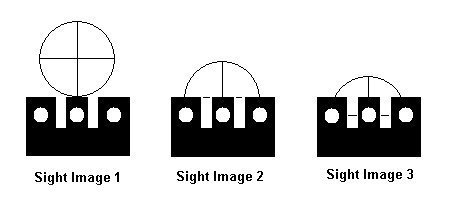Gent's,
Just curious to see what everybody prefers and why? I personally use center mass - however, I'm thinking about modifying to see if I can obtain betters results. Also, I've never seen or, heard of anyone utilizing the "Sight Image 3"...definitely different. The 6 o'clock and center mass are the only two I've experimented with.
Thanks!
AvsFan

Just curious to see what everybody prefers and why? I personally use center mass - however, I'm thinking about modifying to see if I can obtain betters results. Also, I've never seen or, heard of anyone utilizing the "Sight Image 3"...definitely different. The 6 o'clock and center mass are the only two I've experimented with.
Thanks!
AvsFan





